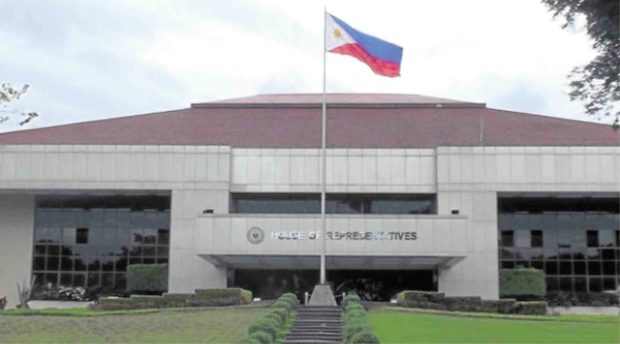Du30 in the ‘House’
On Monday, President Duterte will deliver his third State of the Nation Address (Sona) at the House of Representatives Building Complex, which sits on a 16-ha land in Quezon City.
Here’s a quick look at this complex, which has since served as a silent witness to the various political disruptions, turmoil and milestones that have reshaped Philippine history.
The House of Representatives Building Complex, formerly known as Batasang Pambansa Complex, is a cluster of four imposing structures consisting of the main building, the south wing, the north wing and the Ramon V. Mitra building.
As the bicameral Congress was replaced with the Batasang Pambansa, a unicameral parliament, by the 1973 Constitution during the presidency of then President Ferdinand Marcos, a new complex was designed to house the one legislative body.
On Oct. 13, 1976
Marcos issued Letter of Instruction No. 473 which ordered for the 200-ha abandoned national government center on Constitution Hill in Quezon City to be revived as priority area for development. First in line to be constructed was a structure to house the Batasang Pambansa.
Arch. Felipe Mendoza designed the current Batasang Pambansa buildings in the more than 16-ha land overlooking the scenic Marikina Valley. The north and south wing buildings were completed in December 1977 while the main building was completed five months later.
On June 12, 1978
Marcos delivered his State of the Nation Address (Sona) at the Batasang Pambansa main building coinciding with the historic convening of the first session of the Interim Batasang Pambansa. From 1979 onwards, the Sona was delivered on the fourth Monday of July in the Batasang Pambansa main session hall.
The only exceptions were in 1983 when the Sona was delivered on Jan. 17 to commemorate the anniversary of the ratification of the 1973 Constitution and the second anniversary of the lifting of martial law, and in 1986, when then President Corazon Aquino did not deliver any Sona.
Under the 1987 Constitution, the bicameral Congress was restored. The House of Representatives remained in the Batasang Pambansa complex while the smaller Senate moved to the Old Congress building in Manila before holding office in the GSIS building in Pasay.
The main Batasan building, which houses the session hall, was designed to accommodate more than 200 members of the House. The main session hall is linked on two levels with six-storey wings for the convenience of the House Members.
It features a steep-sloped roof covered structure, a modernist reinterpretation of the traditional bahay kubo, designed to evoke nationalist sentiments through shared culture imagery.
According to the Presidential Communications Operations Office, the three-level galleries and session hall of the Batasang Pambansa have a seating capacity of 1,300 but additional seats can be set up for important events such as the Sona.
In June 2010
The south wing annex building was inaugurated. The P700-million, four-storey building that took three years to build houses 16 conference rooms, a spacious lobby, an executive lounge, six deputy speakers’ rooms, 40 offices for House members and two caucus rooms.
On May 13, 2015
The National Housing Authority officially transferred ownership of the Batasang Pambansa complex to the House of Representatives, ending the almost 40 years of “squatting” untitled land.
The NHA said the House did not actually need to pay anything for the land.
In June 2016
The House Legislative Library, Archives and Museum were inaugurated. The building housed the first electronic legislative library in the country, boasting of modern information and communications technology equipment.
The building would also serve as center for the digitized archival collection of the House, including legislative documents and other artifacts from 1907 up to the present.
Beside the new library building is the Congressional Wall of Honor which showcased the complete roster of the members of the House of Representatives from 1907 to present.
Sources: Philippine Information Agency, Congress.gov.ph, Official Calendar of the Republic, Reading the Architecture of the Underprivileged Classes, Inquirer Archives















